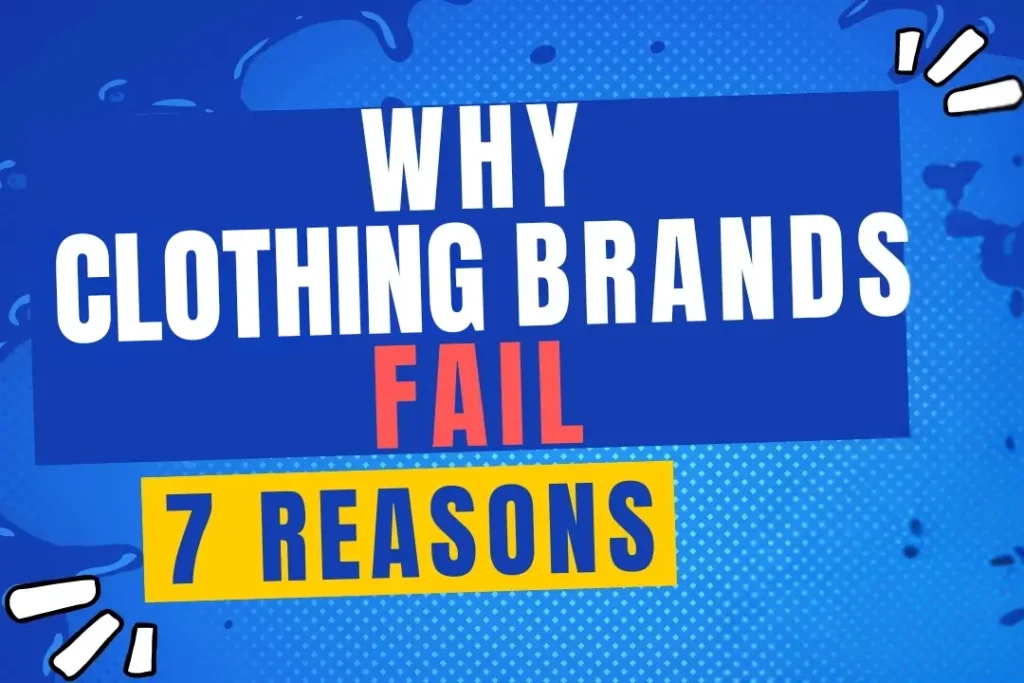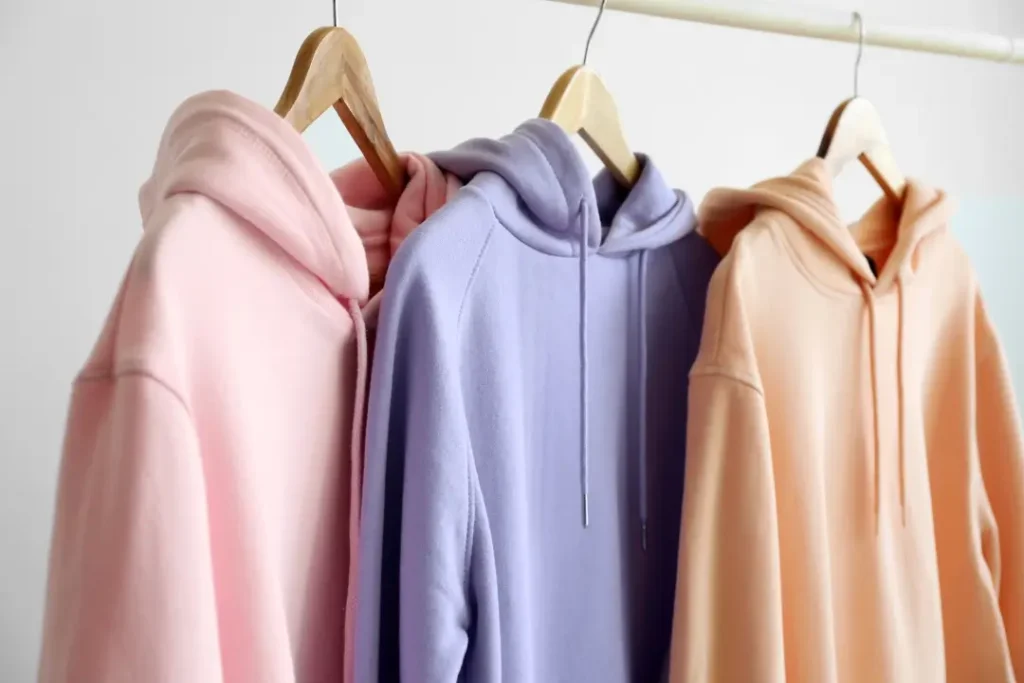
Why Clothing Brands Fail
Top Different Types of Shirts for Women and Men Top Different Types of Shirts for Women and Men (Manufacturer’s Choice) Ever walk into a store
Have you ever dreamt of turning your swimsuit’s passion for fashion and love for the beach into a profitable business? Are you frustrated with the lack of variety and quality in swimwear available in the market? If your answer is “yes” to either of these questions, starting a swimwear line might just be the opportunity you’ve been waiting for. In this ultimate guide, we’ll provide you with everything you must need to know about how to start a swimwear line and avoid common pitfalls.
Did you know the global swimwear market is expected to reach over $29 billion by 2025? This thriving industry, driven by increased interest in water sports, growing body positivity, and innovative fabric technologies, offers immense potential for aspiring entrepreneurs like yourself. As the demand for stylish, comfortable, and functional swimwear grows, there has never been a better time to dive into this market and make a splash. So keep it up with us, and let us guide you on how to start a swimwear line.

Starting a swimwear line is a fantastic way to capitalize on a booming market. It also allows you to express your creativity, promote body positivity, and make a difference in people’s lives. By designing swimwear that caters to various body types, preferences, and lifestyles, you can help people feel quite confident and comfortable in their skin. Additionally, this venture offers the opportunity to collaborate with like-minded individuals, build a loyal customer base, and create a brand that stands out in the market. So that makes a good reason for you to learn how to start a swimwear line.

While starting a swimwear line is undoubtedly exciting, and you have already started looking for how to start a swimwear line, it’s essential to remember that thorough planning and research are crucial to your success. As with any business venture, you must consider factors such as target audience, market trends, materials, production processes, and pricing strategies. By carefully planning and researching every aspect of your swimwear line, you can avoid common pitfalls and set yourself up for long-term success. In the following sections, we’ll delve deeper into these topics to help you confidently and easily navigate the world of swimwear design.

Before jumping into the deep end of learning how to start a swimwear line, it’s crucial to lay a strong foundation by considering several key factors. This section will discuss how to identify your target market, develop a unique brand identity, and understand legal and regulatory requirements.
To better learn how to start a swimwear line and to create swimwear that resonates with your customers, it’s essential to identify your target market first. Consider the following steps:
Stay updated on swimwear trends and identify niches that pique your interest. Whether it’s eco-friendly swimwear, plus-size options, or designs for specific water sports, focusing on a niche can help you differentiate your brand in the competitive market.
Identify your target audience’s age, gender, location, and lifestyle preferences. Demographic research can help you understand your potential customer’s needs and preferences, enabling you to create swimwear that truly resonates with them.
Your brand identity should reflect the essence of your swimwear line and connect with your target audience. Here’s how to develop a distinctive identity:
Articulate the purpose of your swimwear line that guide your business. For example, you may aim to promote body positivity, encourage sustainability, or support a specific community. Communicating your mission and values will help customers connect with your brand.
Choose a catchy, memorable brand name that reflects your swimwear line’s personality and is easy to spell and pronounce. Likewise, design a visually appealing logo that instantly conveys your brand’s identity and distinguishes you from competitors.
Before launching your swimwear line, familiarize yourself with the legal and regulatory requirements to avoid pitfalls. Consider the following:
Choose the appropriate business structure (e.g., sole proprietorship, partnership, or LLC) and register your business with the relevant authorities. This step is crucial for legal compliance and for protecting your assets.
Research the specific licenses and permits required for your swimwear lines, such as a sales tax permit, employer identification number (EIN), or import/export licenses. Compliance with these regulations will help you avoid fines and legal troubles.
Designing swimsuits and creating a successful swimwear line requires attention to detail, innovation, and focusing on your target audience’s needs. This section will discuss selecting the right fabrics and materials, collaborating with designers and pattern makers, and incorporating customer feedback into your designs.
Choosing high-quality, functional fabrics and materials is crucial for creating swimwear that appeals to your target audience. Consider the following:
Embrace sustainable materials, such as recycled polyester or regenerated nylon, to appeal to environmentally-conscious customers and promote your brand’s commitment to sustainability.
Select fabrics that offer a balance between style, comfort, and durability. Look for materials with properties such as UV protection, chlorine resistance, and quick-drying capabilities to ensure your swimwear meets the demands of various water activities.
Creating unique and appealing designs is critical to standing out in the competitive swimwear market. Consider these steps:
Determine whether to hire in-house designers or outsource the design process. In-house talent allows for closer collaboration, while outsourcing can offer cost savings and access to a broader pool of expertise.
Work closely with your design team to create swimwear that captures your brand identity and appeals to your target market. Experiment with colours, patterns, and silhouettes to develop a collection that differentiates you from competitors.
To ensure your swimwear line resonates with your target audience, it’s essential to gather and incorporate customer feedback. Consider these strategies:
Conduct market research and surveys to gather insights into customer preferences, pain points, and desires. Use this information to refine your designs and better meet the needs of your target audience.
Leverage social media platforms to share design concepts, gather feedback, and engage with your target audience. This approach helps you refine your swimwear line and builds excitement and anticipation for your launch.
Starting a swimwear line can be exciting and fulfilling, but it also requires careful planning and execution. Navigating the production process is crucial to launching a successful swimwear line. This involves selecting the right Manufacturer, ensuring quality control, managing production timelines, and budgeting costs effectively. In this detailed article, we will guide you through the process of manufacturing your swimwear line.
When selecting a manufacturer for your swimwear line, you will need to decide between local and overseas Production. Local Production has the advantage of shorter lead times and easier communication, while overseas Production can offer lower costs. You will need to weigh all the pros and cons and decide which option is best for your business.
Once you have decided on the production location, you will need to evaluate the manufacturers' capabilities and experience. Look for a manufacturer with experience in producing swimwear, as this will ensure they have the necessary skills and equipment. Additionally, you will need to ensure that the Manufacturer can produce the styles and materials you require.
Quality control is crucial in ensuring your swimwear line meets the necessary standards. You must implement strict quality control procedures to ensure that every piece of swimwear meets your standards. This may involve regular inspections and testing to ensure that the materials and production processes meet your requirements.
Communication is key when managing the production process. You must maintain regular contact with your manufacturers and suppliers to ensure that everything is running smoothly. This includes providing feedback, resolving any issues, and ensuring that everyone is working towards the same goals.
Starting a swimwear line requires a significant investment of both time and money. You will need to estimate your startup costs and ongoing expenses to ensure that you have sufficient funds to cover everything. This includes the cost of materials, manufacturing, shipping, and marketing.
Finally, you must negotiate prices and payment terms with your manufacturers and suppliers. This can be a complex process, but ensuring you are getting a fair deal is essential. Be prepared to negotiate price, quantity, and delivery times to find the best possible deal for your business.
Creating a swimwear line is only half the battle; the other half is selling it to your target audience. In this section, we will explore various strategies that you can use to market and sell your swimwear line successfully.
In today’s digital age, having an e-commerce website is essential. Your website should be easy to navigate, visually appealing, and showcase your swimwear line’s unique selling points. Ensure that your website is optimized for mobile devices as more customers shop via smartphones.
Most Social media platforms like Instagram, Facebook, and Twitter are powerful tools for reaching your target audience. You can showcase your swimwear line, engage with customers, and collaborate with influencers to reach a wider audience.
Participating in trade shows and events is an excellent way to showcase your swimwear line to potential customers and retail partners. This will allow you to connect with new customers and build relationships with other industry professionals.
Collaborating with brick-and-mortar stores is an effective way to reach customers who prefer to shop offline. You can partner with retailers that align with your brand values and have a similar target audience. Additionally, you can offer in-store promotions and exclusive discounts to incentivize customers to visit the stores.
Offering incentives and rewards to your loyal customers is an excellent way to retain them. You can provide discounts, free shipping, exclusive previews, and other benefits to show your appreciation.
Providing exceptional customer service is crucial to building a loyal customer base. You must aim to exceed your customers’ expectations by responding to their inquiries promptly, resolving issues, and providing personalized recommendations.
As you embark on this new venture, you must be aware of common mistakes that could derail your success. In this article, we will explore the top mistakes to avoid when starting a swimwear line. Learn more about swimwear.
One of the most common mistakes new swimwear brands make is failing to understand their target audience. It is crucial to conduct market research to identify your target market’s needs, preferences, and purchasing behaviour. Without this information, you may end up developing products that do not resonate with your customers.
Another one of the major mistake to avoid when starting your swimwear line is ignoring the market trends. You also need to keep up with the latest swimwear fashion trends and innovations in swimwear to remain competitive. If you are failing to do, it may result in developing products that are outdated and not in demand.
A strong swimsuit startup brand identity is critical in differentiating your swimwear line from your competitors. You must establish a brand identity to avoid your products being seen as generic and unmemorable. It is essential to create a unique brand story, logo, and messaging that resonates with your target audience.
Differentiating your products from your competitors is essential in a crowded market. Failing to do so can result in your swimwear line being seen as a “me-too” product. You should focus on to design your own swimwear line, using high-quality materials, and providing exceptional customer service to differentiate your products.
Production management is crucial in ensuring that your swimwear line is produced on time. Mismanagement of Production can result in delays, increased costs, and lower-quality products. You should have a clear production plan, communicate regularly with your manufacturers, and implement quality control procedures.
Quality control is critical in ensuring that your swimwear line meets the necessary standards. Failing to implement adequate quality control procedures can result in defects and customer returns. You should conduct regular inspections and testing to ensure that your products meet your quality standards.
A lack of marketing strategy can result in your swimwear line being invisible to your target audience. You need to develop a comprehensive marketing strategy that includes social media, influencer partnerships, trade shows, and collaborations with retailers.
Failing to track metrics can result in missed opportunities to improve your swimwear line’s performance. You should regularly analyze your sales data to identify areas of improvement and adjust your strategies accordingly.
In conclusion, we have learned in this blog how to start a swimwear line. To succeed in this industry, one must have a strong swimsuit business identity, knowledge of the market and consumer needs, and creativity in design. Additionally, building relationships with suppliers and manufacturers is crucial for producing high-quality products. For aspiring swimwear entrepreneurs, we encourage you to take calculated risks, continuously educate yourself on trends and innovations within the industry, and never give up on your passion. With dedication and hard work, success is achievable.
Remember that entrepreneurship is not just about creating a business but also making an impact in people’s lives by providing unique solutions to their problems. By starting a swimwear line that fits perfectly with your branding strategy while catering to consumers’ needs, you’ll undoubtedly create value in society.
As Steve Jobs once said at a time: “Your work is going to fill a large part of your life. And the only way to do great work is to love what you do”. So go ahead; take the plunge into the swimsuit industry – learn everything about how to start a swimsuit line, and it may well turn out as one of the most exciting decisions of your life!
Research trends, demographics, and competitors to identify your target market. This will help you create a swimwear line that appeals to your ideal customer.
Choose high-quality, durable, and comfortable materials such as nylon, polyester, or Lycra. These fabrics are commonly used for swimwear due to their ability to dry quickly and retain their shape.
Stay updated on current swimwear trends and find inspiration from various sources like fashion magazines, social media, and industry events. Collaborate with a skilled designer to create unique and stylish swimwear.
Start with creating a technical sketch, then source your materials, and work with a pattern maker to create a pattern. Finally, collaborate with a sample maker to produce your swimwear sample.
Research and compare manufacturers based on their reputation, quality, and pricing. Request samples and communicate your Production needs to find a manufacturer that aligns with your brand’s values.
Determine your production costs, including materials, labor, and shipping. Add your desired profit margin to cover expenses and establish your swimwear line’s pricing.
Utilize social media platforms, collaborate with influencers, and participate in trade shows to promote your brand. Also, consider email marketing and paid advertising to reach a wider audience.
Establish a clear set of quality standards and communicate them to your Manufacturer. Conduct regular inspections during Production and address any issues immediately to maintain high-quality products.
Choose an e-commerce platform, create a visually appealing website, and integrate payment and shipping options. Make sure your site is user-friendly and provides detailed product information.
Establish a clear return and exchange policy, and make it easily accessible to customers. Train your customer service team to handle inquiries professionally and efficiently to ensure customer satisfaction.


Fill up the form so we can contact and help you with all your related queries.
info@expertowears.com

Top Different Types of Shirts for Women and Men Top Different Types of Shirts for Women and Men (Manufacturer’s Choice) Ever walk into a store

What You Must Know About Clothing Samples? Before You Produce a Single Garment: What You Must Know About Clothing Samples? Ever Approved a Bulk Clothing

How Much Does It Cost To Make a Hoodie A Complete Cost Breakdown for Custom Hoodie Manufacturing Why does one hoodie cost $15 to make

Discover the Types of Buttons Discover the Types of Buttons That Transform Style and Functionality Have you ever wondered why there are so many different

Quality Control Checklist for OEM Clothing Production A Detailed Step-by-Step Guide to Guarantee Excellence and Consistency! Small quality defects in OEM apparel production may result

types of healthcare scrubs Everything You Need to Know About Healthcare Scrubs From Fabric Options to Features and How to Choose the Perfect Fit for
Join our Mailing list!
Get all latest news, exclusive deals and updates.